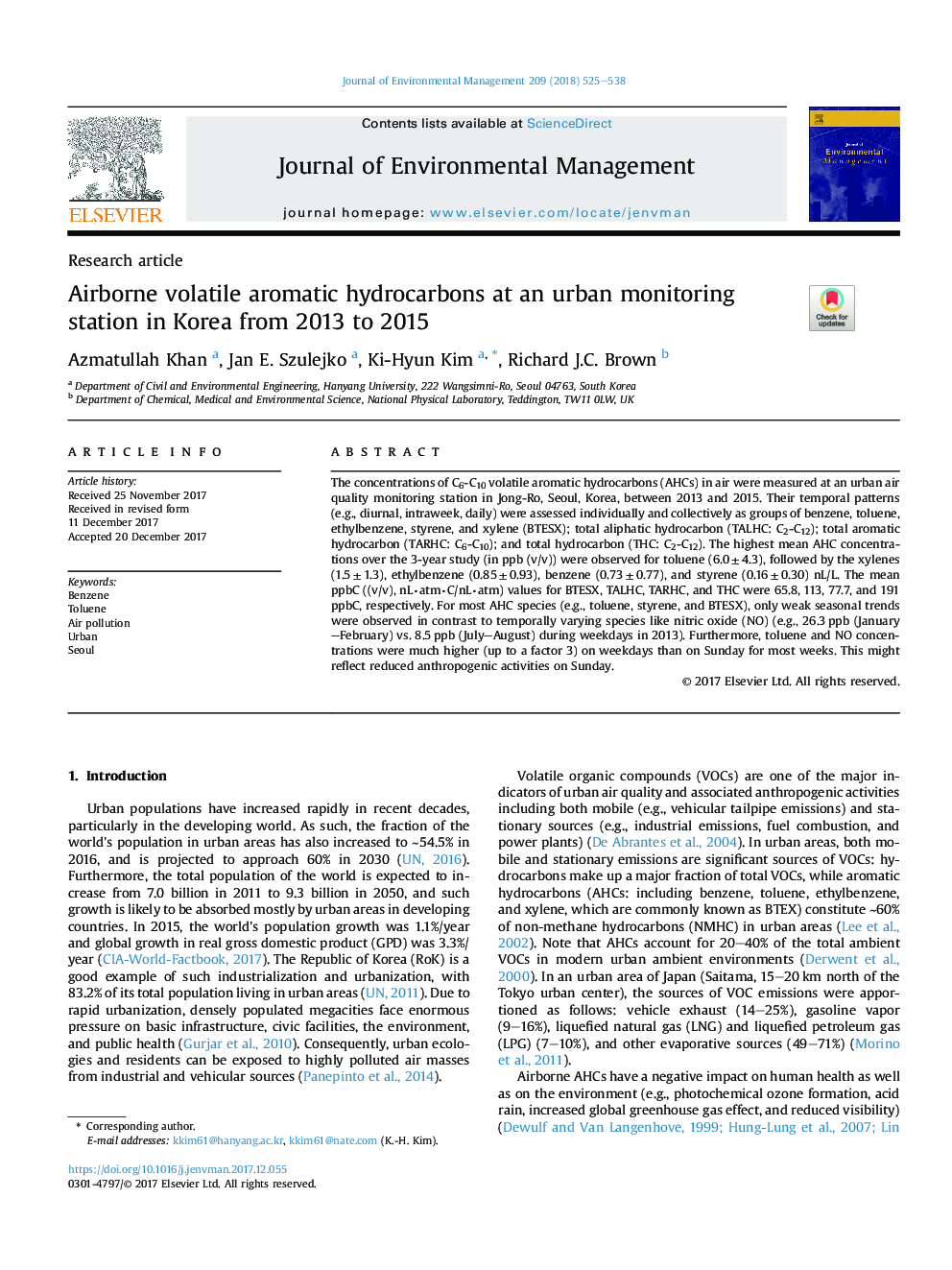| Article ID | Journal | Published Year | Pages | File Type |
|---|---|---|---|---|
| 7478664 | Journal of Environmental Management | 2018 | 14 Pages |
Abstract
The concentrations of C6-C10 volatile aromatic hydrocarbons (AHCs) in air were measured at an urban air quality monitoring station in Jong-Ro, Seoul, Korea, between 2013 and 2015. Their temporal patterns (e.g., diurnal, intraweek, daily) were assessed individually and collectively as groups of benzene, toluene, ethylbenzene, styrene, and xylene (BTESX); total aliphatic hydrocarbon (TALHC: C2-C12); total aromatic hydrocarbon (TARHC: C6-C10); and total hydrocarbon (THC: C2-C12). The highest mean AHC concentrations over the 3-year study (in ppb (v/v)) were observed for toluene (6.0â¯Â±â¯4.3), followed by the xylenes (1.5â¯Â±â¯1.3), ethylbenzene (0.85â¯Â±â¯0.93), benzene (0.73â¯Â±â¯0.77), and styrene (0.16â¯Â±â¯0.30) nL/L. The mean ppbC ((v/v), nLâatmâC/nLâatm) values for BTESX, TALHC, TARHC, and THC were 65.8, 113, 77.7, and 191 ppbC, respectively. For most AHC species (e.g., toluene, styrene, and BTESX), only weak seasonal trends were observed in contrast to temporally varying species like nitric oxide (NO) (e.g., 26.3â¯ppb (January-February) vs. 8.5â¯ppb (July-August) during weekdays in 2013). Furthermore, toluene and NO concentrations were much higher (up to a factor 3) on weekdays than on Sunday for most weeks. This might reflect reduced anthropogenic activities on Sunday.
Related Topics
Physical Sciences and Engineering
Energy
Renewable Energy, Sustainability and the Environment
Authors
Azmatullah Khan, Jan E. Szulejko, Ki-Hyun Kim, Richard J.C. Brown,
